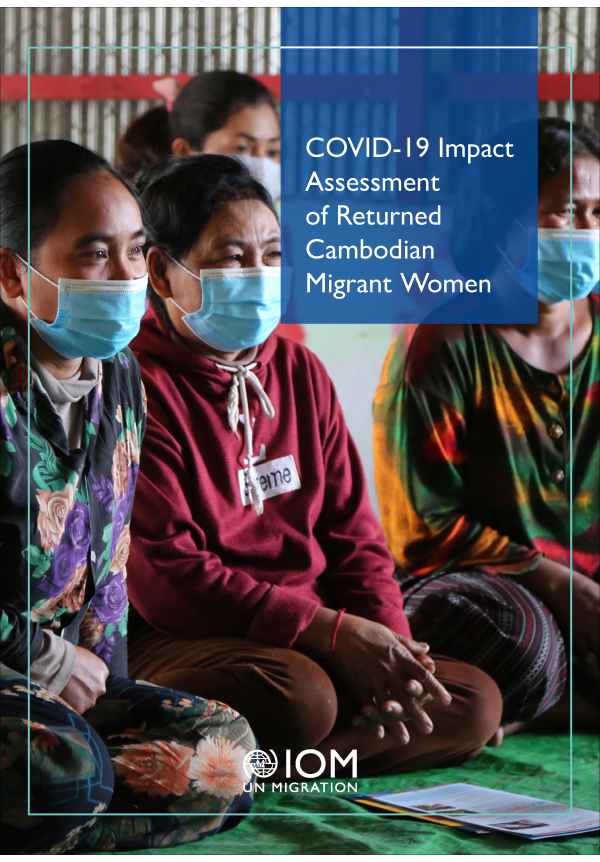COVID-19 Impact Assessment of Returned Cambodian Migrant Women

07 Sep 2022
COVID-19 Impact Assessment of Returned Cambodian Migrant Women
The COVID-19 pandemic has resulted in the unexpected return of many Cambodian women migrant workers to their home provinces. Job losses caused by lockdowns, border closures and a general fear of being separated from family members during the pandemic forced large numbers of women working abroad or in Cambodian cities to return to their home provinces. Since their return, women migrant workers have faced a myriad of challenges. As these women take on increasing amounts of debt to sustain themselves and their families, targeted and effective intervention measures to economically empower them and assist with their reintegration are becoming increasingly urgent.
To improve evidence-based and well-targeted programmatic interventions, IOM conducted a survey of recently returned women migrant workers to gain an insight into their demographic profile and the challenges they are currently facing. The survey, which took place in October 2021, targeted five provinces – Banteay Meanchey, Oddar Meanchey, Battambang, Siem Reap and Kampong Cham – and interviewed 400 women who returned from abroad, Phnom Penh and Sihanoukville between March 2020 and September 2021.
Read More
- List of figures
- List of tables
- Executive Summary
- I.Introduction
- II.Methodology
- III.Demographic Profile of Recently Returned Women Migrant Workers
- Reasons for migration
- Job profiles of recently returned women migrant workers
- At the time of migration
- On return
- Economic profile of recently returned women migrant workers
- Asset ownership
- Remittances
- Debt
- IV.Return and reintegration
- The impact of COVID-19 and challenges on return
- Job search
- Skills development
- Digital literacy
- Financial literacy
- V.Business Ownership
- VI.Summary of Key Findings
- VII.Recommendations
- References